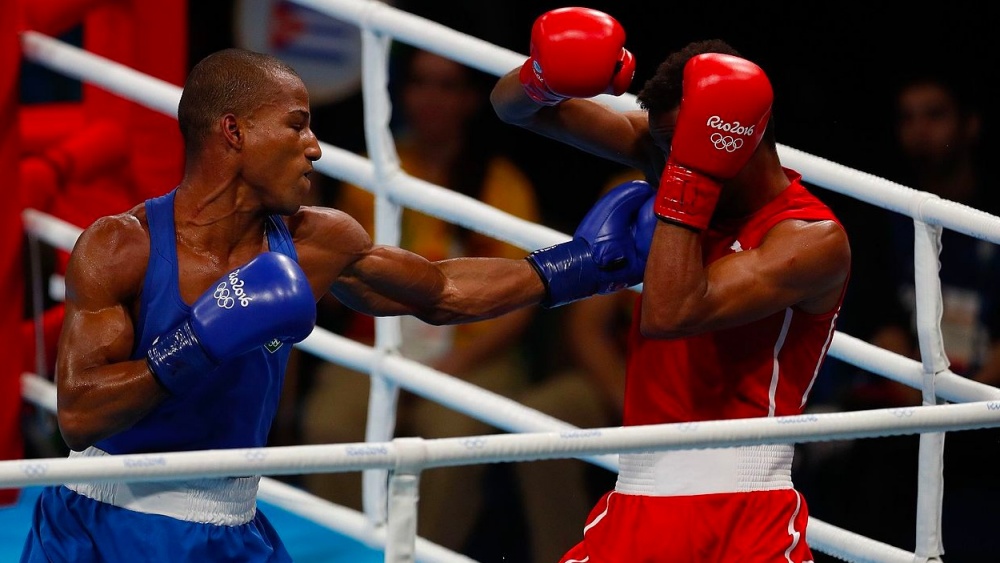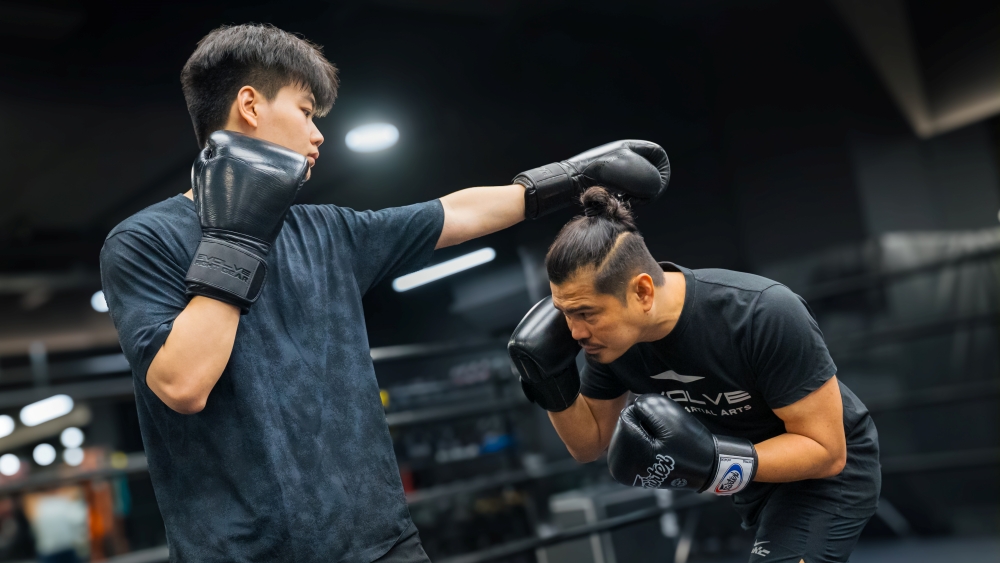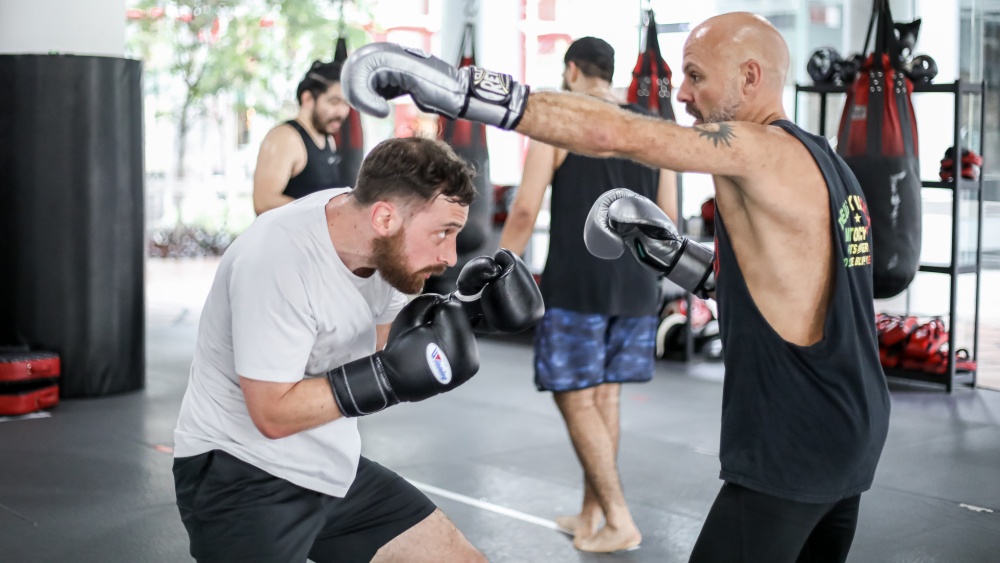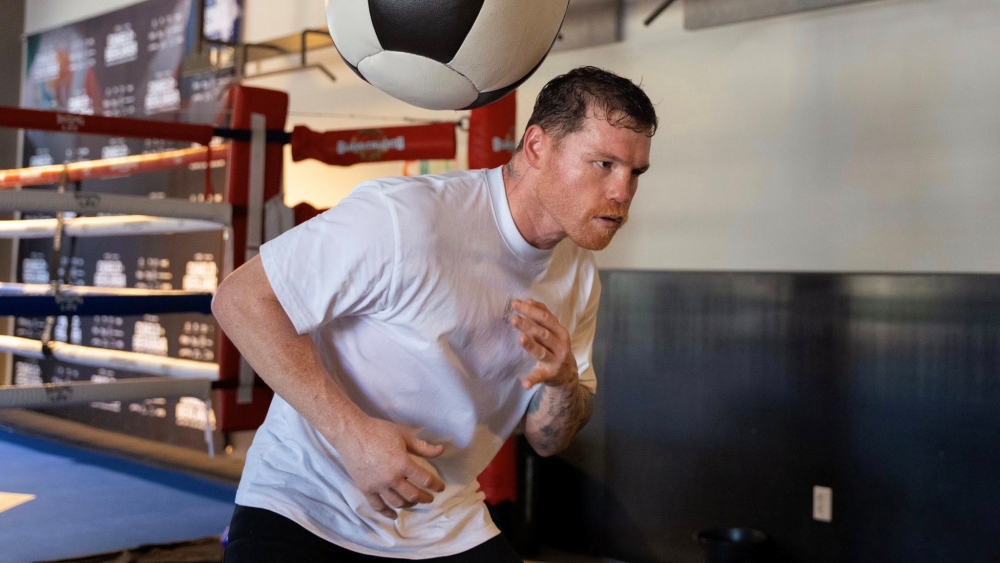One of the slickest techniques in boxing or any combat sports is the boxing shoeshine. When done correctly, it looks as though an invisible shoe is being shined at warp speed. It has been practiced by boxers for many decades, with ring greats including Muhammad Ali, Sugar Ray Leonard, and Roy Jones Junior as just a few notable advocates.
The boxing shoeshine can level up your game and give you the appearance of a slickster inside the ropes. Keep reading for some boxing shoeshine pointers and subtle tips that will help you fine-tune this art.
Shoeshine To Warm-Up
The best place to start with the boxing shoeshine is to incorporate it into your shadowboxing. Intermediate practitioners and boxing beginners should begin moving slowly in a nice, wide stance and bounce on the balls of your feet – this will aid in focusing on the correct position. Hands are not necessary to begin. Instead, aim to push outwardly with your feet as opposed to running on the spot. Bring the punches in when you feel comfortable, and you have a steady rhythm going.
Position your legs in a wider stance with a slight forward lean. When including punches, don’t just make circles – instead, aim to drive your entire arms towards the centreline and up at a 45-degree angle. Your elbows should follow the same motion as your fists. You can gradually increase your speed as your coordination improves and shoulders begin to loosen.
Remember to make sure to come out and forward with your fists – the circle shape will appear naturally with speed once your technique is correct. Your feet and hands should be in sync – so, the left heel comes up with the left uppercut and vice versa with your right side. Incorporating upper and lower body movements simultaneously will create rotational power and improve your overall coordination.
Shoeshine Drills
There are many drills you can apply the boxing shoeshine technique. These come as either a solo exercise or in between other routines. To begin, try 15 seconds of shoeshine as fast as you can, then 15 seconds of bouncing on your toes while you catch your breath. If you find 15 seconds isn’t long enough to recover, extend it to 20 or 30 seconds. The aim is to decrease your rest time as you improve your fitness. When learning how to shoeshine in boxing, try this for 8-10 sets and see how you feel.
Too easy? Reverse it and do 30 seconds on with 15 seconds’ rest. The eventual goal you are working toward is a full 2-minute round of straight shoeshine, with no rest. Take a minute off in between as you would in a fight.
Eventually, you should aim for a full 3-minute round, but to do so requires an extremely high level of fitness. You can also experiment with the time off in between rounds, perhaps reducing it to 30 seconds (once your cardio is good enough).
The shoeshine can be drilled both with a pad holder and on the heavy bag. Keeping your chin tucked in, lean into the bag with your head and lead shoulder. From there, fire off 3 rapid uppercuts to the body and finish off with a hook to the head. Speed is key for this drill. Increase it to 5 uppercuts, then, 7 and 9 finishing off with the hook to the head every time. Try and get to 19 and then work your way back down.
Use your lead shoulder to stop the bag from swinging around. You’re aiming to get your punches so fast that they sound like an Uzi being sprayed. If you find your legs are getting tired, take the leg movements out periodically and just work the upper body. You will likely find some areas aching more than others. You want to get to a point where your upper and lower body are equal in endurance.
Over time your body will adapt to the strain you’re putting on it and fine-tune itself. Muscles that aren’t needed for the exercise will relax and as a result, the movements will become more fluid and less taxing. The result will be increased speed and stamina, and a general feeling of looseness in your body. This is a perfect drill to do before sparring.
You can also try these drills with a pad holder, ensuring they hold the mitts low and flat to emulate body shots. You can swap with a training partner, adding other mutually beneficial boxing drills into your game when ready. Get them to throw jabs and hooks at you in between to ensure you’re staying defensively responsible throughout. It’s easy to get sloppy and start dropping your hands once fatigue begins to set in, hence the importance of a good pad man or training partner.
Shoeshine As A Fight Technique
This technique can be used in a fight to back up your opponent and trick them into lowering their hands. Once this is achieved, you can come over with a nasty power hook. Ideally, you want to apply this tactic when you have your opponent against the ropes or in the corner. Remember to keep your chin tucked and knees dipped, with a slight lean forward onto your opponent. When learning how to shoeshine in boxing. it’s important not to lean so far that you throw yourself off balance.
Standing up straight makes it difficult to let your punches go and may cause you to be knocked off balance or clipped on the chin. Remember to focus on speed. The body shots aren’t necessarily there to do damage but rather to set up the hooks. With that said, lightning-fast flurries from inside may also help you to steal rounds, Sugar Ray Robinson style.
Although the shoeshine looks cool, it’s worth applying the above drills in sparring before attempting them in a fight. Ideally, these tactics are best suited to pressure fighters who like to stay in their opponents’ faces and throw a high volume of punches. As well as forcing their hands down, the body shots can be used to split the guard open for uppercuts down the middle.
Conclusion
Learning how to shoeshine in boxing is a valuable skill. To the untrained eye, it may appear little more than a flashy display of hand speed, but it brings many tangible benefits. Incorporating it into your workout regime, therefore, is advisable. That said, none of this will work if you don’t practice the drills repeatedly. Test them out with training partners – you might be surprised by just how effective they are in both sparring and boxing matches alike.
You may also like:
Debating Boxing’s Future: Should Boxing Fights Have Fewer Rounds?

















